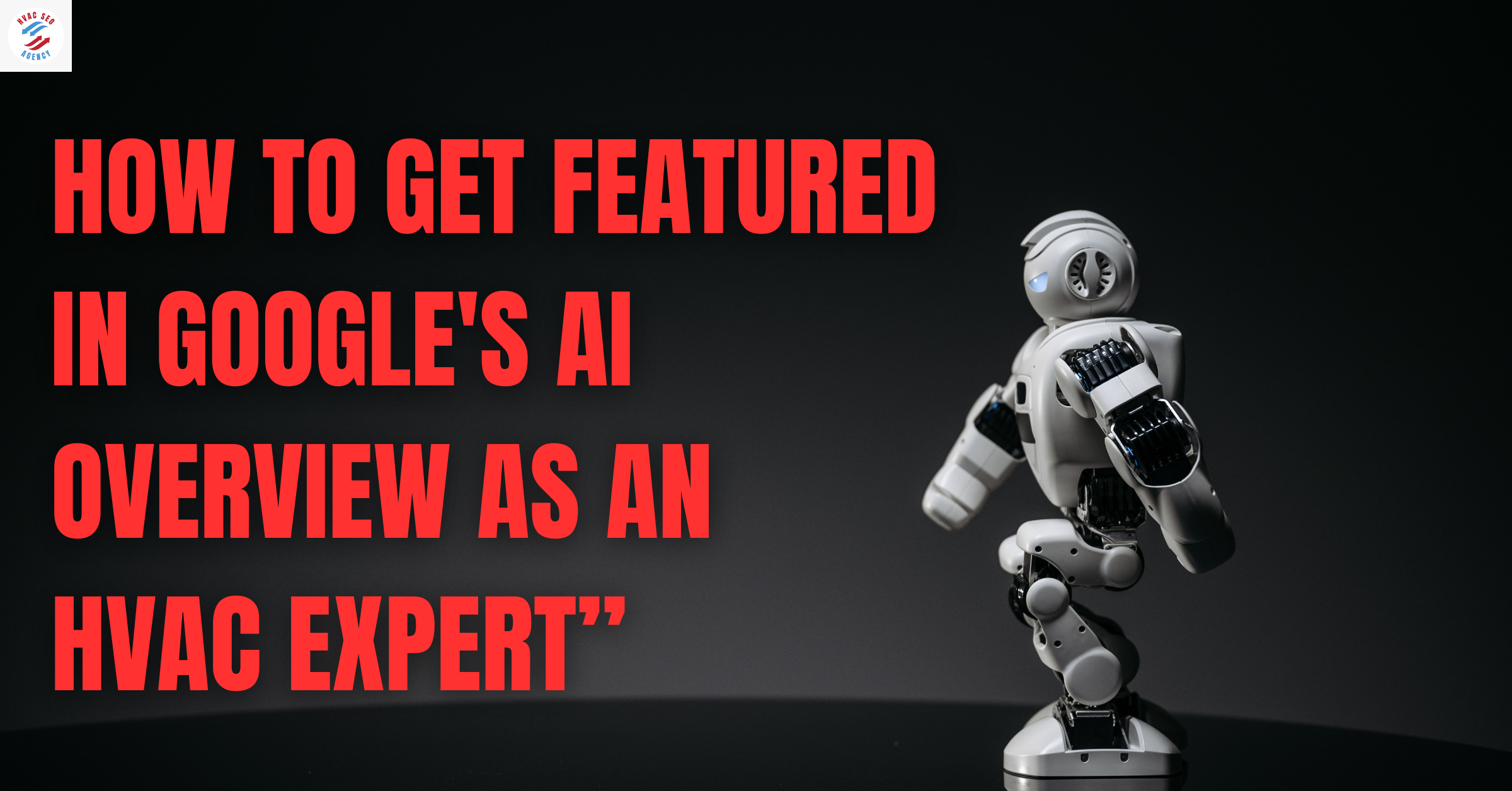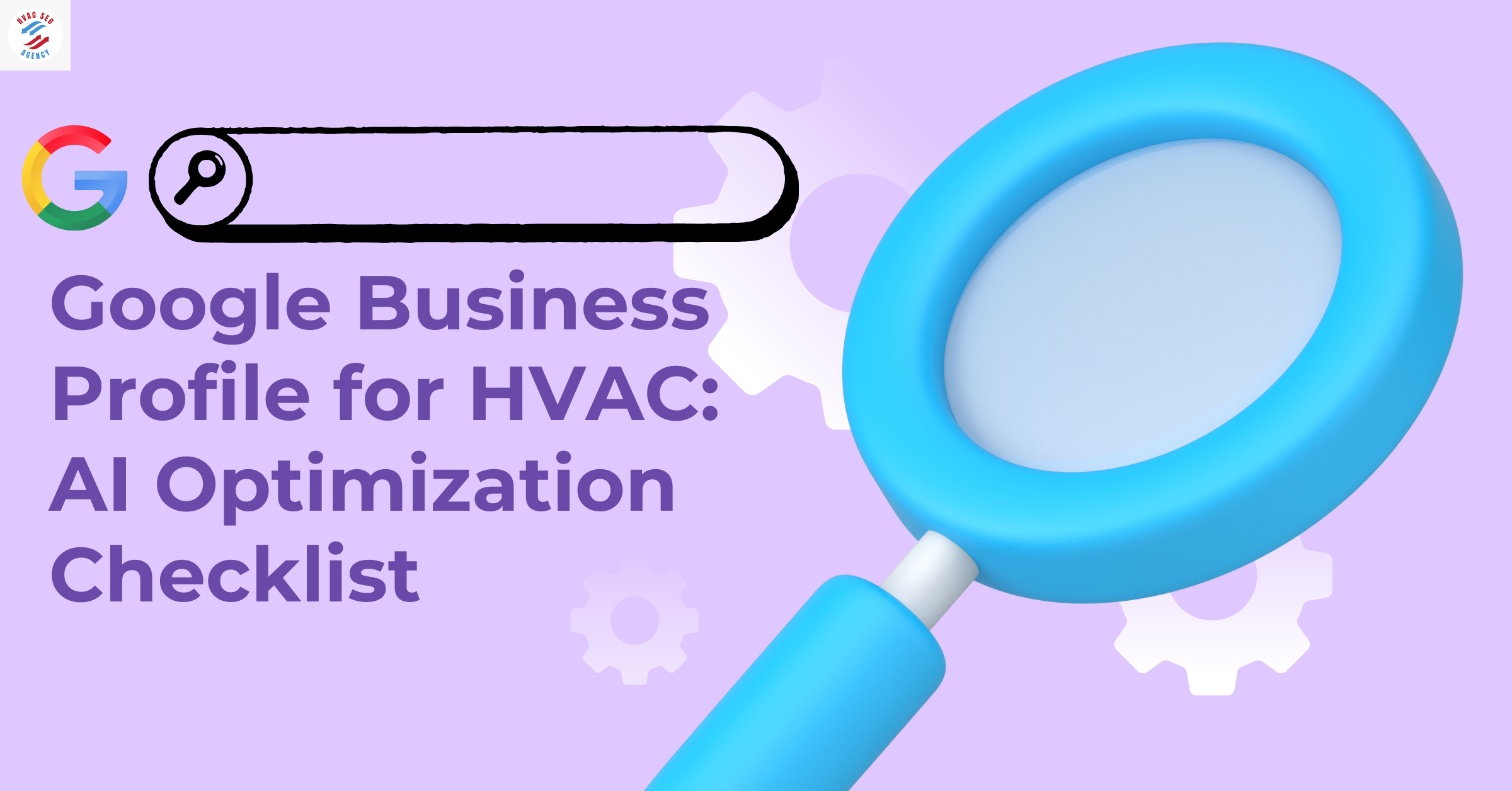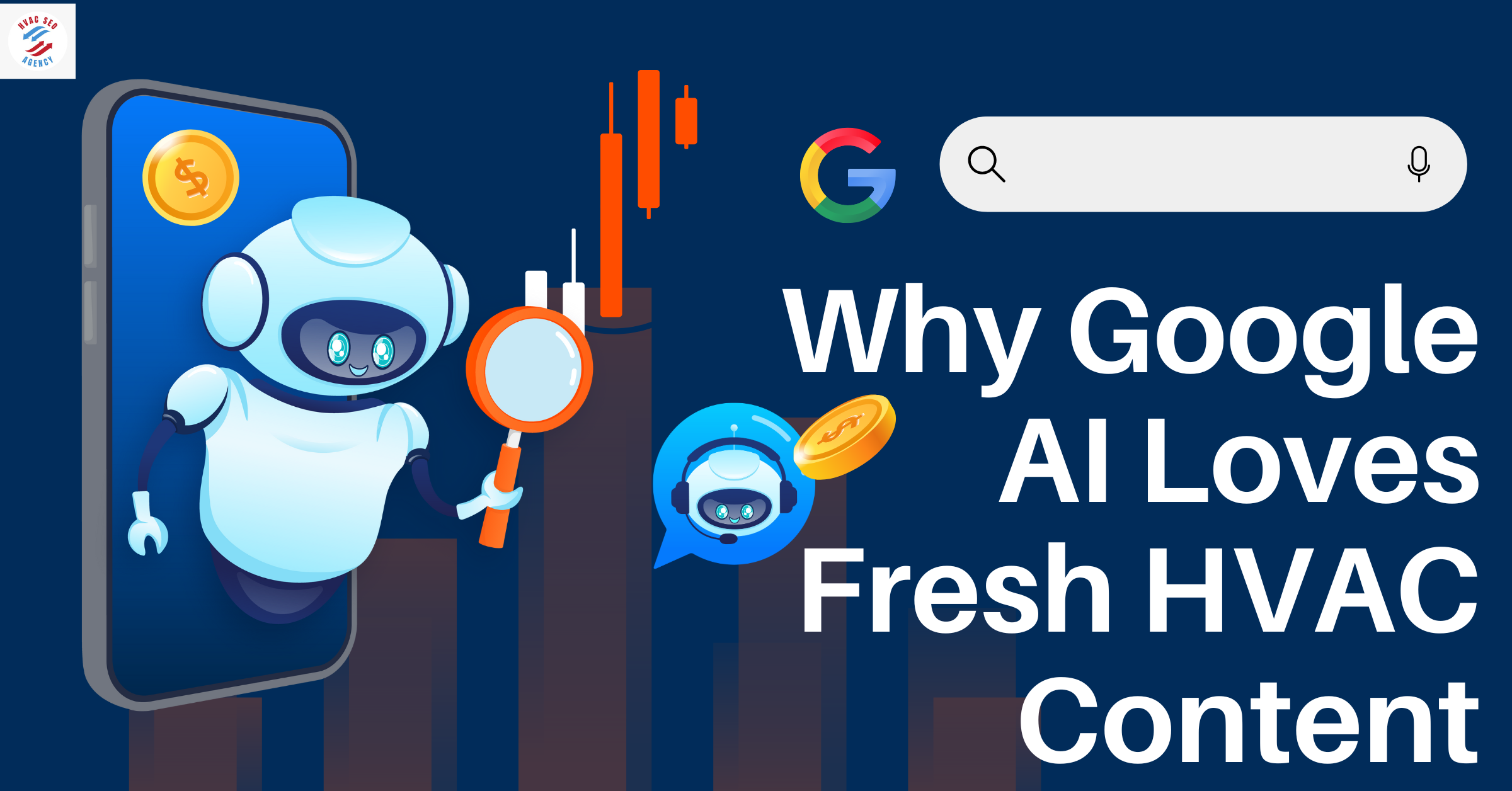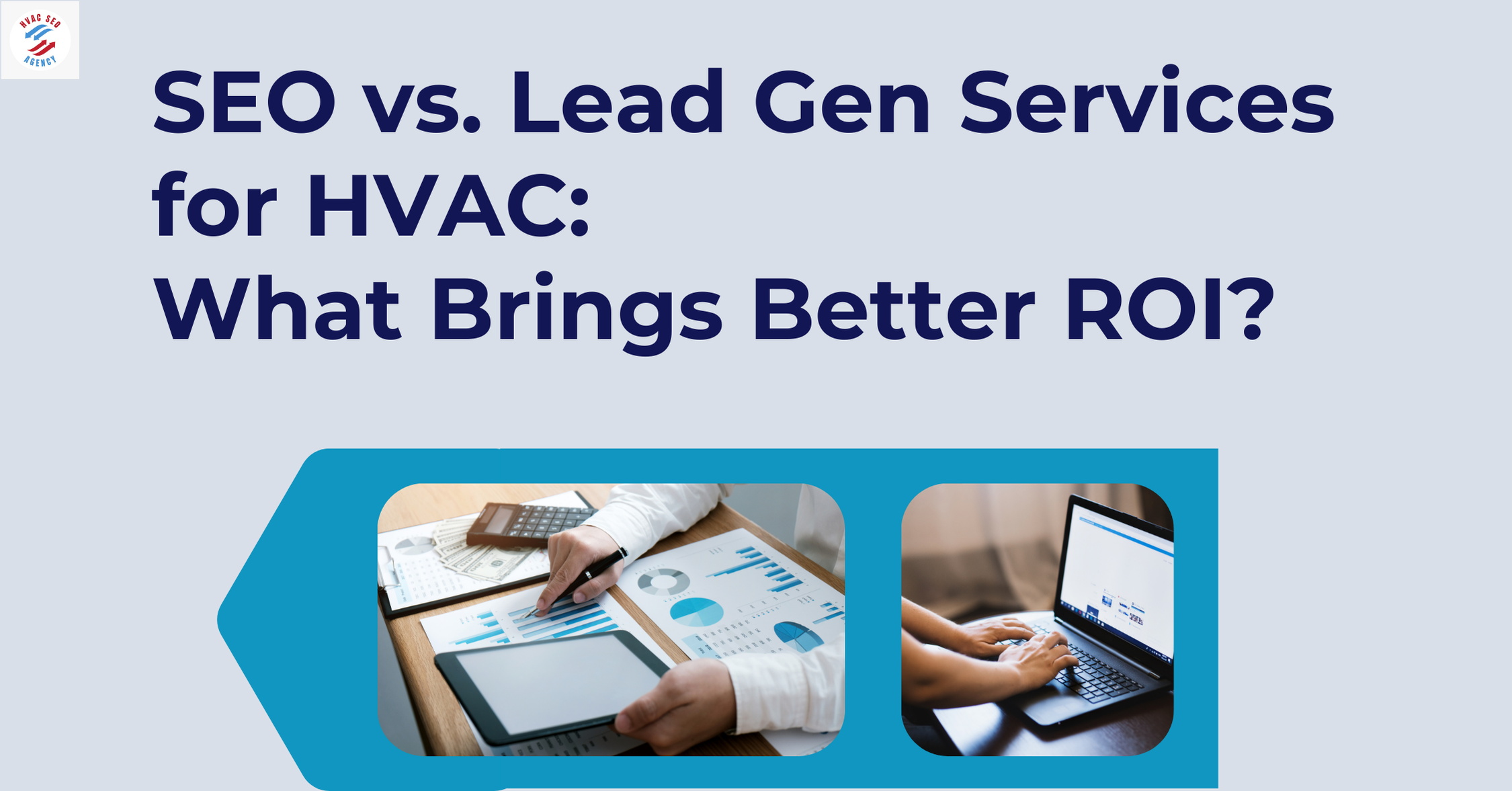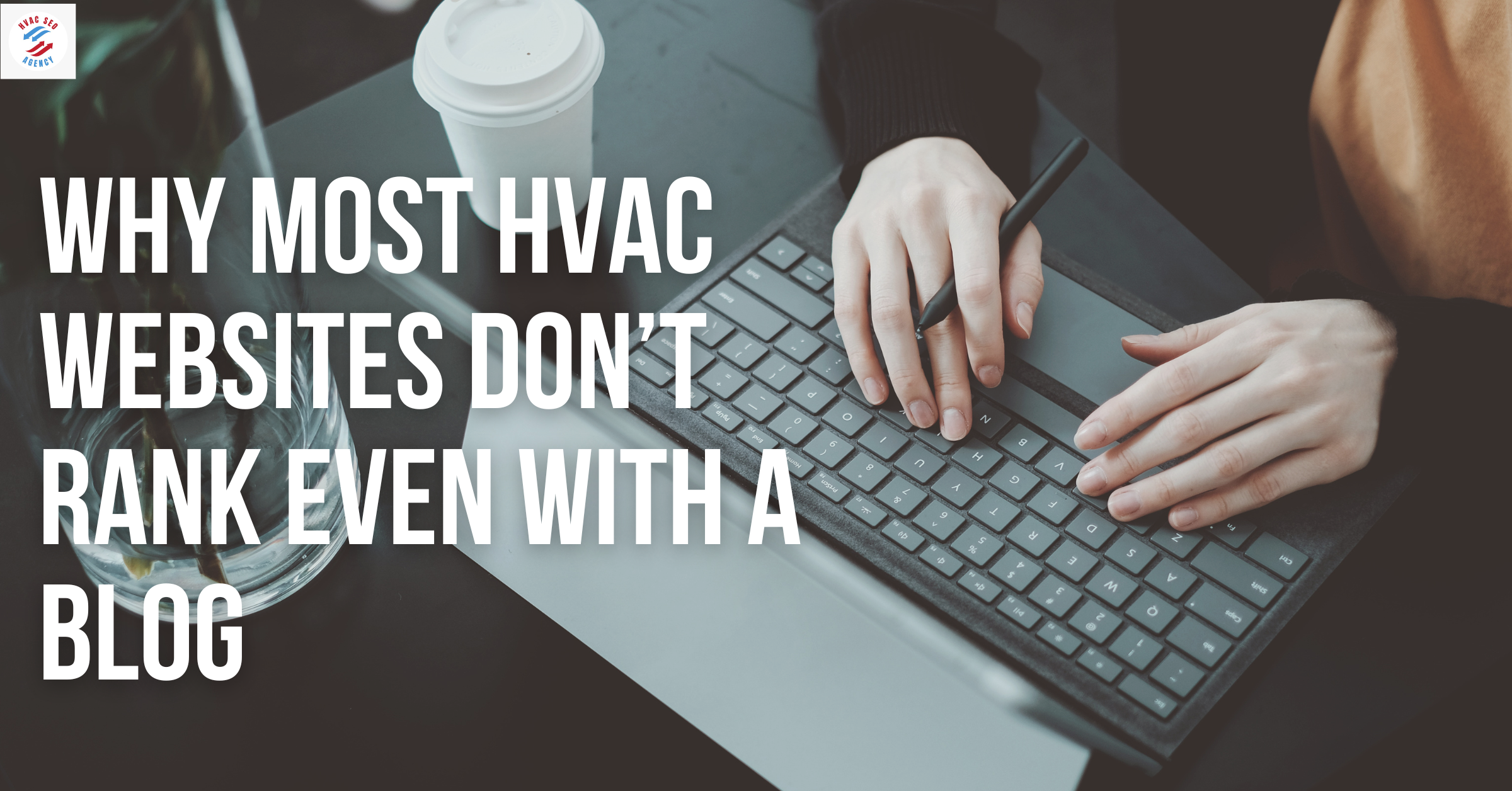How to Create a Profitable HVAC Business Plan in 2025
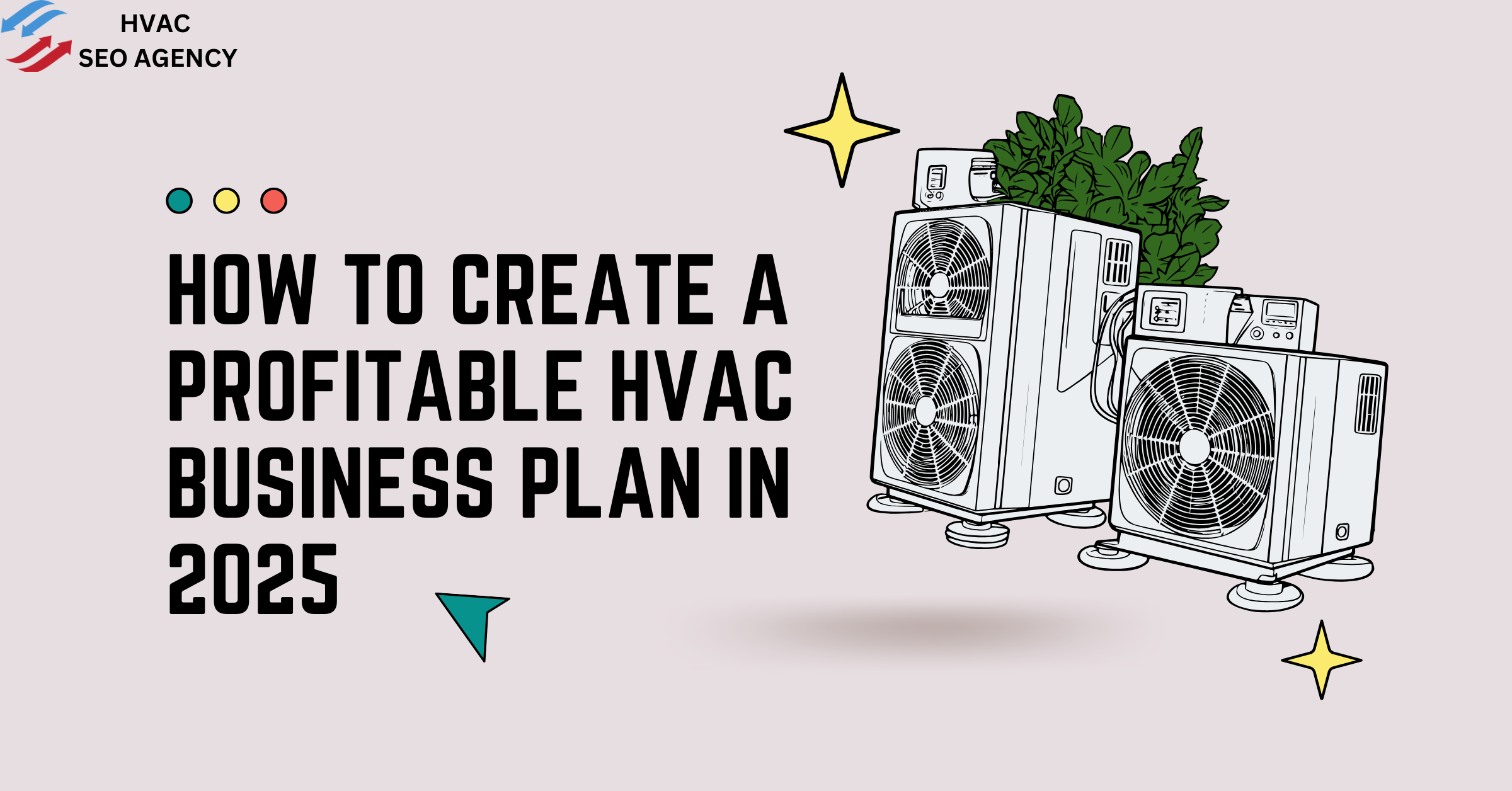
1. Why a Strategic HVAC Business Plan is Crucial for Success
The HVAC industry in the United States is thriving, with the market expected to reach $130+ billion in 2025, growing at a 5.6% CAGR (source: IBISWorld). While this presents a lucrative opportunity for new entrepreneurs, launching an HVAC business without a strategic HVAC business plan can be a costly mistake. Statistics show that nearly 80% of HVAC startups fail within the first five years (source: U.S. Small Business Administration).
What separates successful HVAC businesses from those that struggle? A well-structured HVAC business plan. It serves as a roadmap helping owners plan their finances, streamline operations, and implement the right marketing strategies to maximize profitability.
Why You Need a Business Plan for Your HVAC Startup
A solid HVAC business plan is more than just paperwork; it provides clear direction for your company. Here’s how it can ensure long-term profitability:
Helps Secure Funding: Investors and banks require a structured HVAC startup strategy before approving loans or business credit.
Identifies Profit Margins: With a well-defined financial plan, you can track costs, set competitive pricing, and maximize profitability.
Prepares for Market Challenges: By researching local competitors and analyzing industry trends, you can position your HVAC business for success.
Enhances Operational Efficiency: A business plan ensures smooth scheduling, workforce management, and customer acquisition strategies.
Without a proper HVAC business plan, entrepreneurs often undervalue their services, overspend on marketing, and struggle with cash flow issues leading to failure.
U.S. HVAC Industry at a Glance (2025)
With the right HVAC startup strategy, you can establish a profitable, scalable HVAC business while avoiding common pitfalls. This guide will walk you through each step from market research to digital marketing strategies like Local SEO for HVAC contractors.
2. Industry Analysis: HVAC Market Trends and Profitability in 2025
Before starting an HVAC business, you need to understand the industry trends, profitability factors, and competitive landscape. The HVAC industry is evolving, with innovations in energy efficiency, smart technology, and regulatory requirements shaping the market.
Key Market Trends Shaping the HVAC Industry in 2025
Growth in Energy-Efficient HVAC Systems
With the U.S. government pushing for sustainability, energy-efficient HVAC systems are in high demand. Homeowners and businesses are upgrading to eco-friendly, cost-saving HVAC units to reduce energy bills. Companies focusing on sustainable solutions will have a competitive advantage. Consumers are willing to pay 10-20% more for green HVAC solutions, allowing businesses to Price HVAC Services Without Losing Profit.
Smart HVAC Technology & IoT Integration
The adoption of smart thermostats, IoT-enabled HVAC systems, and AI-driven diagnostics is on the rise. By 2025, over 75% of new HVAC installations will include smart features. This presents huge opportunities for businesses offering installation and maintenance of these systems.
Increased Demand for HVAC Maintenance Plans
Customers are shifting towards long-term service contracts rather than one-time repairs. Offering subscription-based HVAC maintenance services can provide steady, recurring revenue.
HVAC Regulations and Compliance Changes
Government mandates on eco-friendly refrigerants (e.g., R-410A phase-out) and energy-efficient HVAC systems are reshaping the industry. Businesses that stay compliant with these regulations will avoid penalties and improve customer trust.
Profitability Breakdown: How Much Can You Earn in HVAC?
How to Maximize HVAC Business Profits in 2025
Invest in SEO for HVAC contractors to rank higher on Google and attract more clients.
Offer HVAC maintenance contracts to secure long-term revenue.
Focus on Local SEO for HVAC contractors in [City] to dominate local search results.
Partner with an Affordable HVAC SEO Agency to improve lead generation.
By capitalizing on these market trends and profit opportunities, your HVAC business plan can be built for long-term success.
HVAC Industry Growth (2020-2028)
(U.S. HVAC Market Size Over the Years)
Before launching a successful HVAC business, thorough market research is essential. Without understanding your target audience, competition, and demand trends, your HVAC business plan might fail to capture potential customers effectively. A well-researched HVAC startup strategy ensures that you position your business for profitability, tailor your services to customer needs, and outcompete existing HVAC businesses. One of the most effective ways to enhance local visibility is by recognizing that Your HVAC Business Needs a Strong Google My Business Profile to rank higher in search results and attract local customers.
Understanding Your Target Market: Residential vs. Commercial Clients
The HVAC industry primarily serves two markets:
Residential HVAC Services (Homeowners, Apartments, Rental Properties)
Commercial & Industrial HVAC Services (Offices, Factories, Warehouses, Retail Stores)
How to Identify Local Demand for HVAC Services
To determine the best HVAC startup strategy, analyze local search trends and demand:
Use Google Trends and keyword research tools to see search volume for terms like "HVAC business near me" and "HVAC installation services in [City]".
Check real estate trends—fast-growing cities need more HVAC installation and maintenance.
Analyze weather patterns—extreme climates drive more HVAC demand.
Look at industry reports (e.g., IBISWorld) to check growth trends in your region.
Competitor Research: How to Outrank Other HVAC Businesses
Once you’ve identified your target audience, it’s crucial to research competitors and find gaps in their HVAC business strategy. Start by:
Searching for top HVAC businesses in your area on Google.
Analyzing their pricing, services, and customer reviews.
Identifying their marketing strategies, including their SEO for HVAC contractors.
Table: SWOT Analysis of a New HVAC Business
Proven Strategies to Gain a Competitive Edge
Leverage Local SEO for HVAC Contractors in [City] to outrank competitors in Google Search and Maps.
Offer financing options for HVAC installations to attract more customers.
Use digital marketing techniques (social media, PPC ads, and an optimized website) to capture leads.
Differentiate your services—offer energy-efficient HVAC solutions and smart HVAC installations.
Hire an Affordable HVAC SEO Agency to build a strong online presence and generate consistent leads.
A deep competitor analysis combined with a smart HVAC startup strategy will help you create a profitable HVAC business plan that stands out in your market.
4. Financial Planning: Budgeting and Profit Estimation
One of the biggest challenges HVAC startups face is financial mismanagement. Many HVAC business owners underestimate startup costs, pricing strategies, and operational expenses, leading to cash flow problems. A well-defined financial plan is a crucial part of a profitable HVAC business plan.
HVAC Startup Costs Breakdown
Before launching your HVAC business, calculate startup expenses carefully. The cost depends on factors like business location, services offered, and licensing fees.
Tip: To reduce initial costs, partner with an Affordable HVAC SEO Agency instead of hiring an in-house marketing team.
Cost Distribution for Starting an HVAC Business
(HVAC Startup Cost Breakdown)
How to Price Your HVAC Services for Maximum Profitability
Setting the right price for HVAC services is critical to staying competitive and profitable.
1. Cost-Based Pricing
Calculate total costs (materials, labor, overhead) and add a markup for profit.
Example:
AC Installation Cost: $2,000
Labor Cost: $500
Overhead Expenses: $300
Total Cost: $2,800
Final Price (with 40% markup): $3,920
2. Value-Based Pricing
Charge customers based on the perceived value of your service.
Smart HVAC installations can be priced higher due to added convenience.
Eco-friendly HVAC systems justify premium pricing due to energy savings.
3. Competitive Pricing
Compare local competitors and set rates slightly lower or offer extra benefits to attract customers.
Revenue Forecasting: How Much Can Your HVAC Business Make?
Profitability depends on service demand, pricing strategy, and customer base.
Break-even Analysis
The break-even point is when your total revenue covers all business expenses.
If your startup costs are $100,000, and your average profit per HVAC job is $500, you’ll need:
200 HVAC jobs to cover initial investment.
If you handle 10 jobs per week, it will take 20 weeks (~5 months) to break even.
How to Increase Profitability
Rank higher on Google with SEO for HVAC Contractors to attract more local customers.
Offer HVAC maintenance contracts for recurring revenue.
Reduce costs by optimizing fleet routes and using digital invoicing software.
Common Financial Mistakes to Avoid
Underpricing services—low rates attract customers but reduce long-term profitability.
Neglecting marketing—without Local SEO for HVAC contractors, customers won’t find you.
Failing to plan for seasonal fluctuations—set aside funds for slow months.
5. Legal Considerations: HVAC Licensing, Insurance, and Compliance
Starting an HVAC business requires strict adherence to legal, licensing, and insurance requirements. Without proper certifications and compliance, your HVAC business plan could face legal challenges, fines, or operational delays. A well-structured HVAC startup strategy should include understanding state-specific HVAC licensing laws, insurance needs, and industry compliance regulations.
State-wise HVAC Licensing Requirements in the U.S.
Every U.S. state has different licensing regulations for HVAC contractors. Some require formal training and certifications, while others mandate apprenticeship programs before granting a license.
Tip: Always check your local and state licensing requirements before operating an HVAC business.
How to Get Your HVAC License
Complete an HVAC Training Program: Enroll in an accredited HVAC certification course.
Gain Hands-On Experience: Most states require 2-5 years of experience before issuing a license.
Pass a Licensing Exam: Exams typically cover HVAC installation, repair, safety protocols, and local laws.
Obtain EPA Certification: If handling refrigerants, you must have an EPA 608 Certification.
Apply for Your State License: Submit necessary documents and pay licensing fees.
Essential Insurance Policies for HVAC Businesses
To protect your HVAC business, you need comprehensive insurance coverage. This safeguards against lawsuits, equipment damage, and worker injuries.
Without proper insurance, an HVAC business could suffer financial losses due to accidents, lawsuits, or property damage.
6. Crafting Your HVAC Business Model: Choosing a Niche for Maximum Profits
The HVAC industry offers multiple business models, each with different revenue potentials. Choosing the right HVAC business model ensures long-term profitability.
Types of HVAC Business Models
How to Choose the Most Profitable HVAC Niche
Assess Local Demand: If your city has many commercial buildings, commercial HVAC services may be the most profitable.
Evaluate Competition: If residential HVAC services are oversaturated, consider specialized HVAC solutions like smart HVAC installations.
Consider Your Budget: Industrial HVAC contracts have high earning potential but require higher startup capital.
Leverage HVAC SEO Strategies: If you focus on Local SEO for HVAC Contractors in [City], you can dominate the local search results.
7. Digital Marketing Strategies for HVAC Business Growth
A well-structured HVAC business plan isn’t complete without a strong digital marketing strategy. Many HVAC businesses rely on word-of-mouth, but in 2025, online marketing is the most effective way to attract and convert customers. SEO for HVAC contractors, local search optimization, PPC advertising, and content marketing can significantly boost your visibility and revenue.
Why HVAC Businesses Need SEO and Digital Marketing
97% of consumers search for local businesses online before making a decision.
Google ranks HVAC businesses based on website relevance, Google My Business (GMB) optimization, and customer reviews.
Paid ads (PPC) convert faster than organic search but require ongoing investment.
HVAC SEO: How to Rank Higher on Google
Investing in SEO for HVAC contractors ensures that your business appears on the first page of Google when potential customers search for HVAC repair, installation, or maintenance services.
Key HVAC SEO Strategies:
Local SEO for HVAC Contractors in [City]: Optimize your Google My Business (GMB) profile for local search rankings.
On-Page SEO: Use relevant HVAC keywords in your meta titles, descriptions, and content.
Content Marketing: Write valuable blogs like "How to Choose the Right HVAC System" to attract customers.
Link Building: Get backlinks from home improvement directories and local business websites.
Mobile Optimization: Ensure your HVAC website is mobile-friendly, as 65% of local searches come from mobile devices.
PPC Advertising for HVAC Businesses
While SEO takes time, PPC (Pay-Per-Click) advertising offers instant visibility. Google Ads and Facebook Ads allow HVAC businesses to target specific customers in their local area.
Example PPC Campaign Strategy:
Google Ads Keywords: "Emergency HVAC Repair Near Me," "AC Installation in [City]," "Best HVAC Services"
Budget: $500 - $3,000 per month
Target Audience: Homeowners, property managers, business owners
Conversion Rate Expectation: 5-10% on average
Best Marketing Platforms for HVAC Businesses
An Affordable HVAC SEO Agency can help set up PPC campaigns, optimize your website, and improve Google rankings.
PPC vs. SEO Lead Generation in HVAC
(PPC vs. SEO Leads Per $1000 Spent)
8. Streamlining Operations for Maximum Efficiency
Once your HVAC business is established, efficient operations are essential for maintaining profitability and customer satisfaction. Automating processes, using the right HVAC management software, and optimizing fleet operations can help scale your business faster.
Using HVAC Business Management Software
Investing in HVAC management software can help with:
Scheduling & Dispatching – Assign jobs to technicians efficiently.
Automated Invoicing & Payments – Reduce manual billing errors.
Customer Relationship Management (CRM) – Keep track of customer history.
Fleet & Technician Tracking – Optimize routes for on-time service.
Fleet Management & Route Optimization
Fleet expenses can take up 15-25% of an HVAC company’s operating budget. Reducing fuel costs and improving job scheduling can increase profitability.
Use GPS tracking to assign technicians to the nearest job site.
Reduce idle time by planning service routes efficiently.
Maintain HVAC service vehicles to prevent breakdowns and avoid job delays.
How to Reduce Overhead Costs Without Sacrificing Service Quality
Running an HVAC business comes with expenses, but smart planning can help lower costs without compromising on service.
Cost Reduction Strategies
Automate Customer Communication – Use chatbots and SMS reminders.
Invest in Preventive Maintenance Contracts – Keeps cash flow consistent.
Negotiate Bulk Equipment Purchases – Get discounts on HVAC parts.
By streamlining HVAC operations, businesses can improve customer satisfaction, increase efficiency, and maximize profits.
9. Customer Retention: Increasing Repeat Business & Long-Term Growth
Many HVAC businesses focus only on acquiring new customers, but retaining existing clients is more profitable. Studies show that increasing customer retention rates by just 5% can boost profits by 25-95%. A well-thought-out HVAC business plan must include strategies for customer retention to ensure long-term business growth.
Why Customer Retention is More Profitable Than New Client Acquisition
Acquiring a new customer is 5 to 7 times more expensive than retaining an existing one. Customers who have already used your HVAC services are more likely to:
Hire you for future maintenance or repair work.
Purchase service contracts for ongoing maintenance.
Recommend your business to friends and family.
Table: Cost Comparison – Customer Retention vs. Acquisition
Tip: Instead of focusing only on getting new customers, build long-term relationships with existing ones through loyalty programs and regular follow-ups.
Customer Retention vs. Acquisition Costs
(Cost per New Customer vs. Retained Customer)
HVAC Maintenance Contracts: A Game-Changer for Retention
One of the most effective ways to increase customer retention is offering HVAC maintenance contracts. These ensure recurring revenue while providing customers with regular checkups and priority service.
Benefits of HVAC Maintenance Plans
Steady cash flow – Clients pay a monthly or yearly fee for continued service.
Higher customer lifetime value – Customers stay engaged with your brand.
Reduced emergency repairs – Preventative maintenance reduces system failures.
How to Set Up an HVAC Maintenance Program
Offer different contract levels (Basic, Standard, Premium).
Provide exclusive benefits (priority service, discounts, extended warranties).
Market through email and website pop-ups.
Example: A company offering 3 HVAC maintenance plans—Basic ($99/year), Standard ($199/year), and Premium ($399/year)—sees 30% more repeat business.
Managing Online Reviews and Reputation
Your online reputation plays a crucial role in customer retention and business growth. 88% of customers trust online reviews as much as personal recommendations.
How to Get More Positive Reviews for Your HVAC Business
Ask happy customers to leave reviews on Google and Yelp.
Follow up via email or SMS with a direct review link.
Resolve negative feedback quickly to maintain credibility.
By focusing on customer retention, maintenance plans, and online reputation, your HVAC business will grow organically and profitably.
10. Common HVAC Startup Mistakes to Avoid
Many HVAC startups fail because they make costly mistakes early on. A profitable HVAC business plan should anticipate these common pitfalls and implement strategies to avoid them.
Underpricing or Overpricing HVAC Services
One of the biggest challenges in HVAC businesses is setting competitive pricing.
Underpricing:
Attracts customers but reduces profit margins.
Leads to unsustainable business growth.
Overpricing:
Turns away potential clients.
Makes your business less competitive in local markets.
Solution: Use a balanced pricing strategy based on cost analysis, competitor rates, and customer value perception.
Table: Correct Pricing Strategy for HVAC Services
Ignoring Digital Marketing & SEO
An HVAC business that doesn’t invest in Local SEO for HVAC Contractors in [City] will struggle to get consistent leads.
Why SEO is Essential for HVAC Businesses
75% of people never scroll past the first page of Google.
HVAC businesses ranking in the top 3 get 50% more calls than those on page two.
An Affordable HVAC SEO Agency can help improve rankings without breaking your budget.
Not Investing in Quality Customer Service
Even with great marketing, bad customer service can drive customers away.
Common HVAC Customer Service Mistakes:
Not answering calls or responding late.
Failing to show up on time for appointments.
Overcharging or not being transparent about pricing.
Solution: Train your HVAC team to be responsive, professional, and customer-focused.
Legal & Compliance Oversights
Many HVAC startups fail to get proper licenses and insurance, leading to legal issues.
Risks of Non-Compliance:
Heavy fines from local authorities.
Lawsuits from unsatisfied customers.
Loss of business credibility.
Solution: Follow state-specific licensing requirements and get insurance coverage to protect your business.
Not Preparing for Seasonal Fluctuations
The HVAC industry is seasonal; summer and winter are peak times, while spring and fall see lower demand.
Mistake: Not planning for slow seasons leads to cash flow issues.
Solution: Offer off-season promotions, HVAC maintenance contracts, and smart thermostat upgrades.
By avoiding these common mistakes, you can ensure your HVAC business remains profitable and continues to grow sustainably
11. Future Trends in the HVAC Industry
The HVAC industry is evolving rapidly, with new technologies and regulations shaping how businesses operate. A forward-thinking HVAC business plan should account for these trends to ensure long-term profitability and market relevance.
Energy-Efficient HVAC Systems: The Future of Sustainable Cooling & Heating
With the push for sustainability, energy-efficient HVAC systems are becoming the norm. Government incentives and growing consumer awareness are driving demand for:
High-SEER (Seasonal Energy Efficiency Ratio) HVAC units that reduce energy consumption.
Geothermal HVAC systems, which use the earth’s natural heat for heating and cooling.
Ductless mini-split systems, offering high efficiency and zoned climate control.
Market Insight: The global energy-efficient HVAC market is expected to grow at a CAGR of 7.2% between 2025 and 2030, making it one of the fastest-growing segments.
Tip: If your HVAC business offers energy-efficient solutions, highlight this in your SEO for HVAC contractors and marketing efforts.
Smart HVAC Solutions & IoT Integration
The rise of smart technology has led to the integration of IoT (Internet of Things) in HVAC systems. Features like Wi-Fi-enabled thermostats and AI-driven diagnostics allow homeowners and businesses to monitor energy usage and automate climate control.
Government Incentives for Green HVAC Technologies
Governments are pushing businesses and homeowners toward eco-friendly HVAC solutions through incentives, including:
Federal tax credits for energy-efficient HVAC installations.
State rebates for businesses adopting green HVAC systems.
EPA guidelines mandating the phase-out of old refrigerants.
Example: The Inflation Reduction Act (IRA) offers up to $2,000 in tax credits for installing energy-efficient heat pumps.
Tip: Promoting energy-saving HVAC systems in your marketing can attract eco-conscious customers and increase sales.
Changing HVAC Regulations & Refrigerant Phase-Outs
In 2025, several new regulations will impact HVAC businesses:
The phase-out of R-410A refrigerant in favor of more environmentally friendly alternatives.
Stricter energy efficiency standards for new HVAC installations.
Higher compliance requirements for commercial HVAC contractors.
Actionable Strategy: HVAC business owners should stay updated on EPA guidelines and train their technicians on new refrigerants and installation practices.
By incorporating these future trends into your HVAC business plan, you can ensure sustainability, compliance, and long-term growth.
Smart HVAC Adoption Growth (2020-2028)
(Smart HVAC Market Growth)
Conclusion: Your Next Steps for HVAC Business Success
Creating a profitable HVAC business plan in 2025 requires strategic planning, financial foresight, and effective marketing. From understanding market demand and legal compliance to leveraging HVAC SEO strategies and customer retention, every step plays a role in your success.
FAQs
1. How much money do you need to start an HVAC business?
The startup cost for an HVAC business typically ranges from $50,000 to $200,000, depending on factors like equipment, licensing, insurance, marketing, and vehicle expenses. Here’s a breakdown:
Pro Tip: To minimize costs, start with residential HVAC services, lease equipment, and work with an Affordable HVAC SEO Agency instead of hiring an in-house marketing team.
2. What is the most profitable type of HVAC business?
The most profitable HVAC business models include commercial HVAC contracts, industrial HVAC installations, and smart HVAC solutions. Here’s a comparison:
Pro Tip: Combining HVAC maintenance contracts with smart HVAC solutions can maximize recurring revenue.
3. How can I get more HVAC customers quickly?
To get more HVAC customers quickly, focus on digital marketing, Local SEO, and referral programs.
Optimize for Local SEO for HVAC Contractors in [City] – Claim your Google My Business listing and add city-specific keywords.
Run PPC Ads (Google Ads & Facebook Ads) – Target high-intent search terms like “Emergency HVAC repair near me”.
Offer Special Promotions – Discounted first-time HVAC tune-ups can attract new clients.
Leverage HVAC SEO Strategies – Invest in content marketing and local backlinks to improve rankings.
Ask for Reviews & Referrals – 90% of customers trust online reviews for hiring HVAC professionals.
Pro Tip: Hiring an Affordable HVAC SEO Agency can help you get more leads and calls quickly.
4. Is it worth starting an HVAC business in 2025?
Yes, starting an HVAC business in 2025 is highly profitable due to rising demand, energy efficiency trends, and smart HVAC technology growth.
Key Industry Stats:
The U.S. HVAC market is projected to hit $130+ billion in 2025, growing at 5.6% CAGR.
Demand for smart thermostats and energy-efficient systems is increasing by 7.2% annually.
Government incentives provide up to $2,000 in tax credits for installing green HVAC solutions.
Pro Tip: Focus on energy-efficient and smart HVAC solutions to tap into a high-growth market.
5. What are the best marketing strategies for HVAC businesses?
The best HVAC marketing strategies combine SEO, paid advertising, and customer engagement.
Use Local SEO for HVAC Contractors in [City] to rank at the top of Google.
Run PPC ads for high-intent HVAC keywords like “AC repair near me.”
Leverage social media marketing to attract homeowners & businesses.
Pro Tip: Work with an Affordable HVAC SEO Agency to build a high-converting HVAC marketing strategy.
6. How long does it take for an HVAC business to become profitable?
Most HVAC businesses become profitable within 6-12 months, depending on startup costs, pricing strategy, and customer acquisition.
Break-even Analysis Example
Initial investment: $100,000
Average profit per HVAC job: $500
Total jobs needed to break even: 200
If handling 10 jobs/week, breakeven is reached in: 20 weeks (~5 months)
Pro Tip: Use recurring maintenance contracts and digital marketing to speed up profitability.
7. What are the biggest challenges when starting an HVAC business?
Common HVAC Startup Challenges & Solutions:
Pro Tip: Avoid common HVAC business mistakes like underpricing and ignoring SEO for HVAC contractors.


